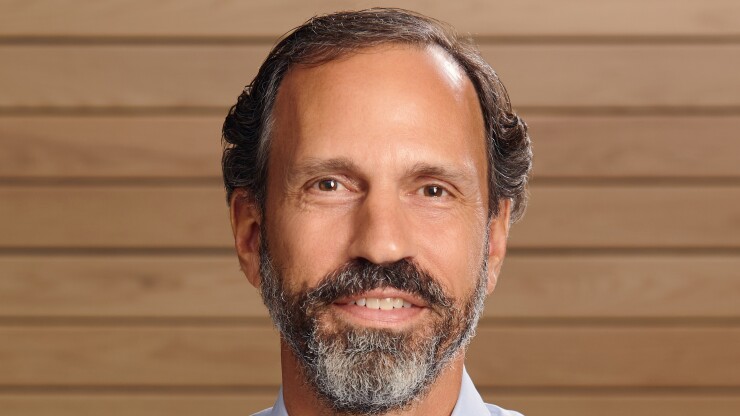
Mastercard's technology diversification strategy has resulted in a handful of product rollouts in just the past few weeks. But there's another less visible strategy that aims to tie different projects together and ease access to the card brand's array of networks.
Open banking, which refers to data-sharing among financial institutions to deliver a wider range of products at a faster speed, is playing an increasing role in enabling Mastercard to develop and deploy products that don't rely directly on fees from card payments.
"Open banking is like a fabric that's a connecting tissue over parts of our business," said Craig Vosburg, chief product officer at Mastercard.
Vosburg, who has worked at Mastercard for 17 years and became CPO in 2021, is responsible for a large swath of Mastercard's strategy to provide value-added services. This includes marshaling resources from a series of acquisitions — adding real-time processing from
Mastercard is focused on areas such as blockchain-enabled services, open development and authentication, Vosburg said. It is also developing partnerships to streamline these offerings.
"Open banking can validate the existence of an account, the availability of funds and insight into balances based on cash flow over the course of a period of time such as a month," Vosburg said. "That can inform the strategy of a biller or a merchant to enable payments directly between accounts rather than a check, for example."
Mastercard recently entered a partnership with U.K. banks to combat
Mastercard will also focus on tokenization, which refers to replacing card numbers with substitute identifiers to shield a transaction or authenticate users on either end of a payment. This can enable bank and fintech partners to expand support for cross-border transactions. That includes reaching contractors and gig economy workers in more markets.
Other initiatives include expanding the use of virtual cards for travel booking and payments, growing account-to-account payments and new uses for real-time processing when FedNow is introduced later this month.
Open banking also supports Mastercard Installments, the card network's buy now/pay later product, and facilitates
The consumers and businesses that use these products will benefit from digital access to account and transaction information, Vosburg said. While open banking is often associated with fintechs, it is available to banks and all financial institutions that engage with consumers, he said. "Once a customer consents to use their information, there's a variety of ways that can be used."
Open banking is not a product, though there are products and services that enable these kinds of banking services, said Aaron Press, research directly for worldwide payment strategies at IDC.
"At the most basic level, open banking is about exposing bank data and services via APIs for other organizations to leverage, and products can be built that take advantage of that data availability," Press said, adding that he recently attended a meeting at Mastercard where the card network focused heavily on open banking. "The APIs and the data behind them could be considered a product, as could a service that leverages those APIs to combine that data in a useful way."
Visa also has an extensive
Open banking initially grew out of PSD2, which required banks operating in the European Union to share data with outside parties. While U.S. regulations governing open banking are still
"It's a competitive dynamic," Vosburg said. "Customers are seeing the benefit of having access to added services, or cheap payments or being able to access brokerage services or online trading or digital mortgage services."
Prior to open banking, customers had little choice but to go with a bank account that paid a low, or no, interest rate, but open banking has made things more competitive, said Aaron McPherson, principal at AFM Consulting.
"Bringing it back to Mastercard, it clearly sees opportunities to service nonbanks for things like fund transfers, risk management and cross-border payments," McPherson said. "The concepts and tech behind open banking are more of a utility, but one with clear product implications that are very disruptive to banks. As always, the choice is to disrupt oneself or be disrupted."






